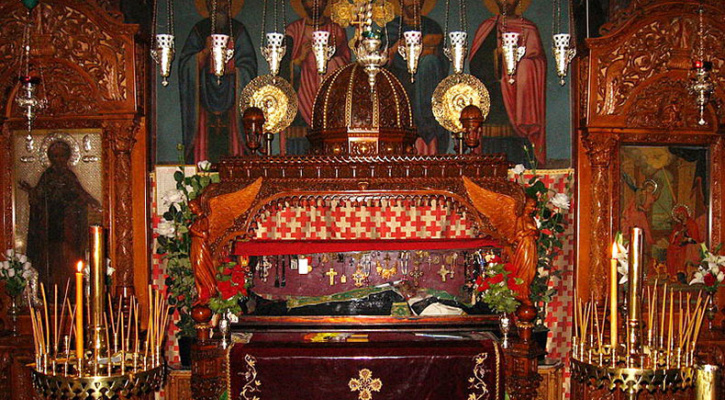Saint of the day for December 5: the story of San Saba

Saint of the day for December 5nd
(439 - December 5, 532)
The history of San Saba
Born in Cappadocia, Sabas is one of the most respected patriarchs among the monks of Palestine and is considered one of the founders of Eastern monasticism.
After an unhappy childhood in which he was abused and escaped multiple times, Sabas finally sought refuge in a monastery. As the family members tried to persuade him to return home, the boy felt drawn to the monastic life. Although he was the youngest monk in the house, he excelled in virtue.
At the age of 18 he went to Jerusalem, trying to learn more about living in solitude. He soon asked to be accepted as a disciple of a well-known local loner, although he was initially considered too young to live fully as a hermit. Initially, Sabas lived in a monastery, where he worked during the day and spent much of the night in prayer. At the age of 30, he was given permission to spend five days each week in a nearby remote cave, engaging in prayer and manual labor in the form of woven baskets. After the death of his mentor, Saint Euthymius, Sabas moved further into the desert near Jericho. There he lived for several years in a cave near the Cedron stream. A rope was his means of access. Wild herbs among the rocks were his food. From time to time the men brought him more food and objects, while he had to go far for his water.
Some of these men came to him eager to join him in his solitude. At first he refused. But not long after he relented, his followers increased to more than 150, all living in individual huts clustered around a church, called the laura.
The bishop persuaded a reluctant Sabas, then in his early fifties, to prepare for the priesthood so that he could better serve his monastic community in leadership. While working as an abbot in a large community of monks, he always felt called to live the life of a hermit. During each year, constantly during Lent, he left his monks for long periods of time, often to their distress. A group of 60 men left the monastery, settling in a nearby ruined structure. When Sabas learned of the hardships they were facing, he generously provided them with provisions and witnessed the repair of their church.
Over the years Saba traveled throughout Palestine, preaching the true faith and successfully returning many to the Church. At the age of 91, in response to an appeal from the Patriarch of Jerusalem, Sabas embarked on a trip to Constantinople in conjunction with the Samaritan revolt and its violent repression. He fell ill and soon after his return he died in the monastery of Mar Saba. Today the monastery is still inhabited by the monks of the Eastern Orthodox Church and Saint Saba is considered one of the most noteworthy figures of early monasticism.
Reflection
Few of us share Sabas' desire for a desert cave, but most of us sometimes resent the demands that others place in our time. Sabas understands this. When he finally achieved the solitude he desired, a community immediately began to gather around him, and he was forced into a leadership role. It stands as a model of patient generosity for anyone whose time and energy are required by others, that is, for all of us.